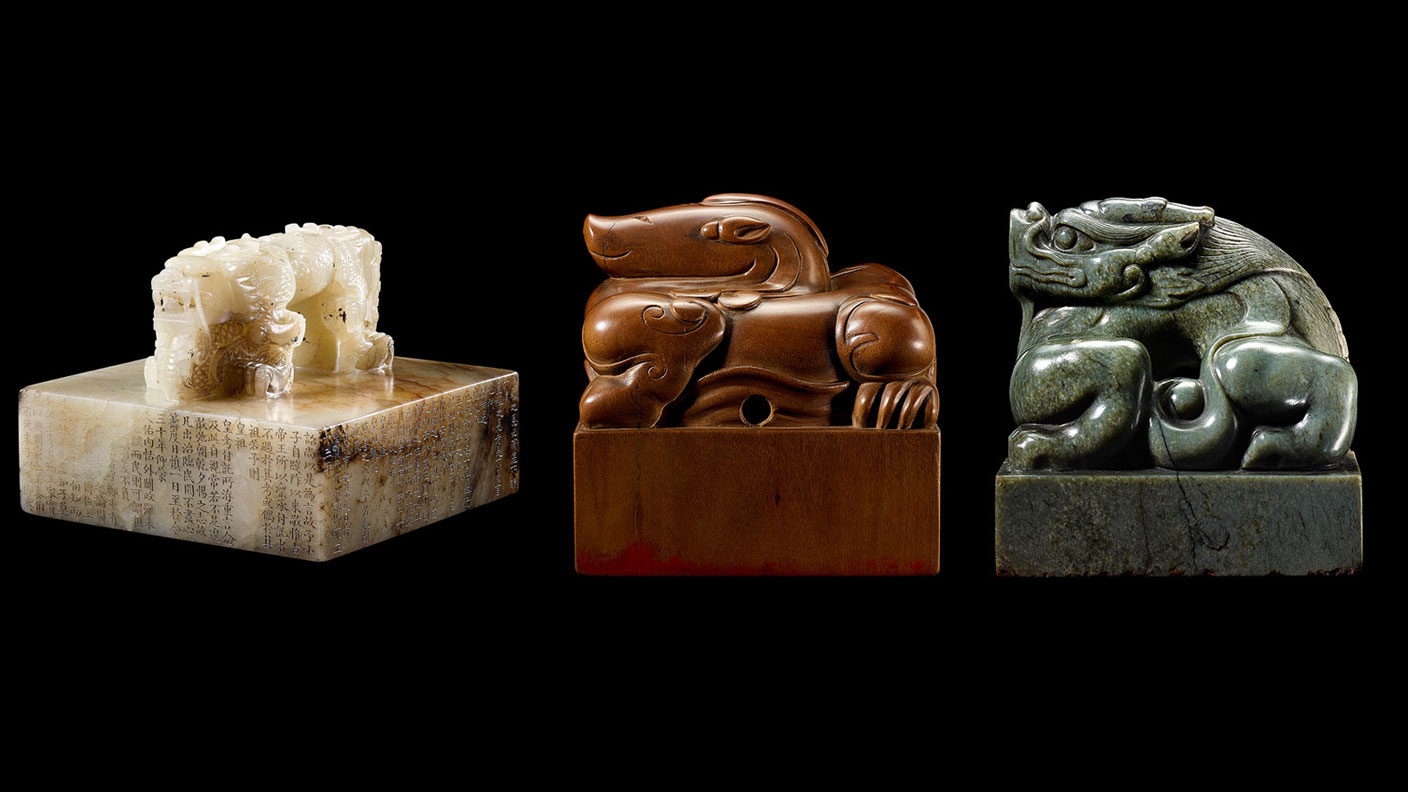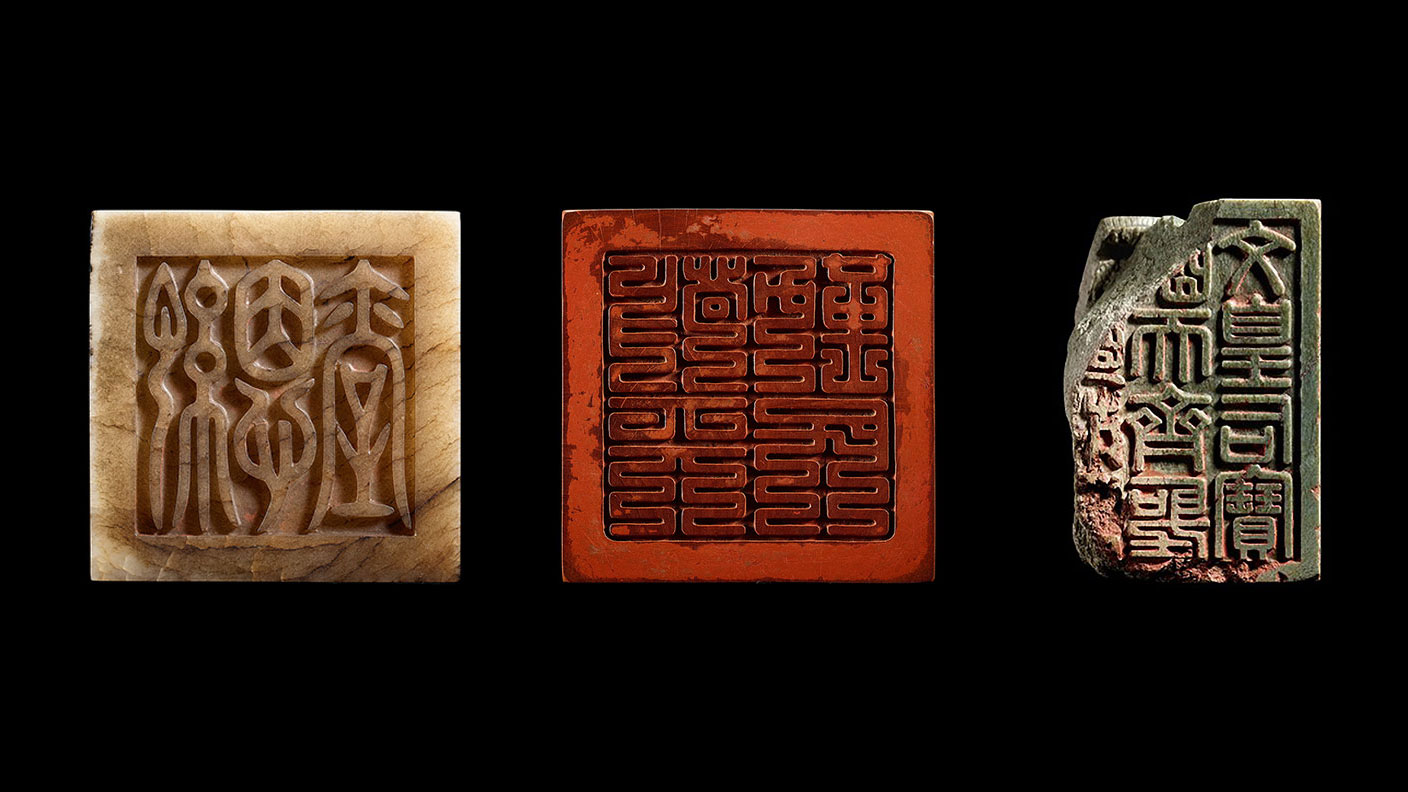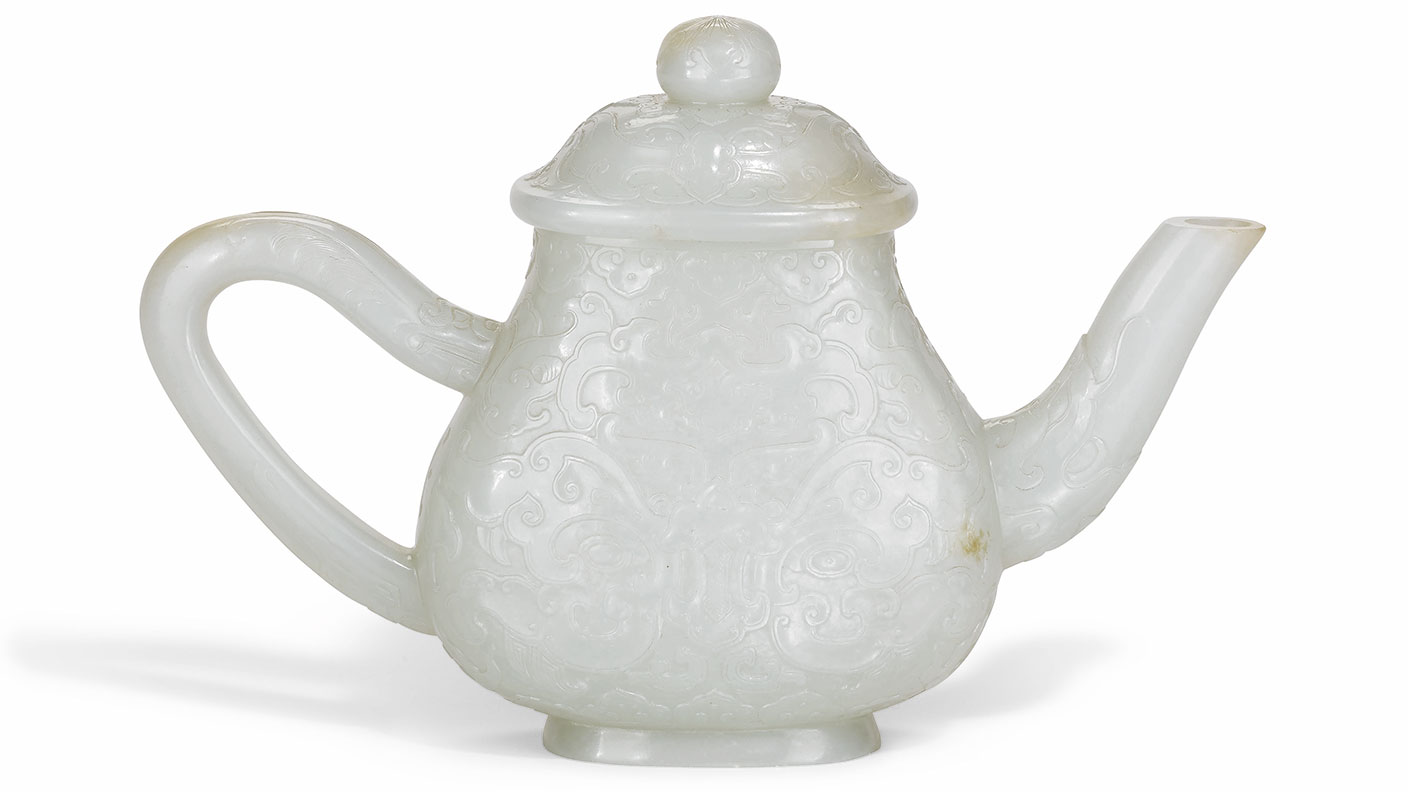Chinese history as told via Asia’s booming auction market
Three Chinese imperial seals sold at auction tell a story about the present and past worlds, says Chris Carter.


Three Chinese imperial seals went to auction with Sotheby’s in Hong Kong this week, each with an astronomic valuation. Given their rarity, not to mention the growth of the auction market in Asia, it’s not hard to see why. The seals also give us a window into the lives of China’s imperial rulers.
The rise…
The first, the Qianlong Emperor’s “Ji’entang” seal from 1766, is made from white jade. On top, the knop (grip) is carved in the shape of a dragon and, in delicate lettering around the base, the emperor sets the record straight on his succession. His grandfather was the Kangxi Emperor (1654-1722), at that time “the single most powerful person on earth”, notes Sotheby’s. In the 61st and final year of his reign, the Kangxi Emperor was introduced to one of his grandsons, the 20-year-old Prince Hongli, at the Yuanmingyuan palace in Beijing. Taken with the young man, the emperor undertook to raise him, with the throne passing to his father, and thereafter to him, at which time he became Qianlong Emperor. The seal, valued at up to HK$180m (£16.8m), celebrates the Emperor’s relationship with his grandfather. In 1796, he abdicated after 61 years so as not to reign longer than his forebear.

… rule…
When an emperor paid homage to a deceased ancestor, three identical memorial seals would be made from “silk” (paper and plaster), fragrant wood and jade. The silk seal would be burnt after a memorial service, the wooden seal placed in a tomb, and the jade seal kept in the Tai Miao temple in Beijing. Thus the second seal at the Sotheby’s sale is made from tanxiangmu (sandalwood) and it was the largest to be carved for the Kangxi Emperor. Sporting a mythical beast on top, the base of the seal bears four characters that read jingtian qinmin (“revere Heaven and serve thy people”), reflecting the first of four philosophical principles of ruling held by the Qing dynasty emperors – the others being fazu (learn from the ancestors), qinzheng (be diligent at politics), and aimin (love thy people). The Jingtian Qinmin seal was given an upper estimate of HK$100m (£9.4m).
MoneyWeek
Subscribe to MoneyWeek today and get your first six magazine issues absolutely FREE

Sign up to Money Morning
Don't miss the latest investment and personal finances news, market analysis, plus money-saving tips with our free twice-daily newsletter
Don't miss the latest investment and personal finances news, market analysis, plus money-saving tips with our free twice-daily newsletter
… and fall of a dynasty
The final seal bears witness to what happens when one dynasty, in this case the Ming, is supplanted by another – the Qing of the Kangxi and Qianlong emperors. It was carved in green jade for Empress Wen (1362-1407), consort of the Yongle Emperor, with a horned dragon, “encapsulating the pinnacle of wealth and power of the Ming dynasty in the early 15th century”. It is also the only Ming-era memorial seal to have survived. Even the Qianlong Emperor wondered why this was, surmising that others had either been recarved for later rulers, or simply destroyed when his Qing dynasty took power in 1644. He was probably right. The Yongle Empress Wen seal, valued at up to HK$30m (£2.8m), was smashed almost in two, and bears the scorch marks of a dynasty violently overthrown.
The price of a pixel

Ever wondered what a unique digital “artwork” of a single pixel would cost? Last week, we found out. The single grey pixel by the anonymous artist (or artists) Pak, imaginatively titled The Pixel, was bought for $1,355,555 at an auction via online marketplace Nifty Gateway, in partnership with Sotheby’s. Another non-fungible token (NFT) by Pak sold for over $1.4m. More intriguing still was the sale of a fungible token – a digital work that wasn’t unique – over three days. Called Cube, people could buy an image of a single cube for $500, an image of five cubes for $2,500, and so on, up to 1,000 cubes for $500,000. On the first day, around 19,740 cubes were bought for $9.9m. On the second day, the price of a cube doubled to $1,000 and, interestingly, a further 3,268 cubes were bought for $3.3m. On the third day, the price rose again, to $1,500, yet 593 more cubes were sold. In total, 3,080 buyers spent around $14m on 23,598 cubes over the three days.
Stranger still, Pak also introduced the “burning” of an NFT – in other words, relinquishing ownership, as Abby Schultz notes in Barron’s Penta. In return, the now-former owner gets an “Ash” token, which allows them “access to future pieces” created by Pak. In effect, Pak created its own digital currency for its artworks. During the sale, Ash tokens were reportedly trading on cryptocurrency exchanges for $22,000. Pak “aggressively” hyped the sale on social media, says James Tarmy on Bloomberg. There were also NFT prizes for the person who, for example, bought the most cubes, posted the hashtag #PakWasHere to the biggest social-media audience (socialite Paris Hilton responded), or spent the most money on the secondary market – clever because NFTs pay the artist every time they are resold.
Auctions
Going…
Christie’s in Hong Kong is to offer an “important and extremely rare” blue and white “kui dragon” jar on 28 May. The jar hails from China’s Xuande period (1426-1435) and features a kui dragon, inspired by the mythical Makara from Indian mythology. Only a few jars are known to exist from the Xuande period, with one preserved in the Palace Museum in Beijing, and another in the Fitzwilliam Museum in Cambridge. The sale is in celebration of Hong Kong collector Robert Chang’s 95th birthday, with the proceeds to benefit his foundation. Christie’s hasn’t released an estimate, but it is bound to fetch more than the £30,000 Chang paid for it when he bought it at auction with Christie’s in London in 1988.
Gone…

A rare pale celadon jade teapot dating from the Qianlong period (see above), sold last month with Sotheby’s for £176,400, 18 times its estimate, at a sale of items from the collection of the late Patricia Knatchbull, Second Countess Mountbatten of Burma. The piece (pictured), one of several jades, had formerly belonged to Sir Ernest Cassel, who was financial adviser to King Edward VII and the countess’s great-grandfather. Other items in the sale to fetch high prices included a Jaguar 420, commissioned by Lord Mountbatten in 1967, which sold for £126,000; a late-18th-century brooch named the Banks Diamond, which fetched £138,600; and a Fabergé gold-mounted cigarette case, which made £47,880.
Get the latest financial news, insights and expert analysis from our award-winning MoneyWeek team, to help you understand what really matters when it comes to your finances.

-
 ‘Why I have ditched my Help to Buy ISA for cash savings and the stock market’
‘Why I have ditched my Help to Buy ISA for cash savings and the stock market’Without the 25% bonus, my Help to Buy ISA is effectively redundant, says MoneyWeek writer Sam Walker.
-
 Is your inheritance tax allowance cut if you sell to downsize or sell your home to pay for care?
Is your inheritance tax allowance cut if you sell to downsize or sell your home to pay for care?Downsizing relief is a little-known benefit that could save your loved ones tens of thousands of pounds in inheritance tax after you’ve died.
-
 Stock markets have a mountain to climb: opt for resilience, growth and value
Stock markets have a mountain to climb: opt for resilience, growth and valueOpinion Julian Wheeler, partner and US equity specialist, Shard Capital, highlights three US stocks where he would put his money
-
 The steady rise of stablecoins
The steady rise of stablecoinsInnovations in cryptocurrency have created stablecoins, a new form of money. Trump is an enthusiastic supporter, but its benefits are not yet clear
-
 SRT Marine Systems: A leader in marine technology
SRT Marine Systems: A leader in marine technologySRT Marine Systems is thriving and has a bulging order book, says Dr Michael Tubbs
-
 Goodwin: A superlative British manufacturer to buy now
Goodwin: A superlative British manufacturer to buy nowVeteran engineering group Goodwin has created a new profit engine. But following its tremendous run, can investors still afford the shares?
-
 A change in leadership: Is US stock market exceptionalism over?
A change in leadership: Is US stock market exceptionalism over?US stocks trailed the rest of the world in 2025. Is this a sign that a long-overdue shift is underway?
-
 A reckoning is coming for unnecessary investment trusts
A reckoning is coming for unnecessary investment trustsInvestment trusts that don’t use their structural advantages will find it increasingly hard to survive, says Rupert Hargreaves
-
 Metals and AI power emerging markets
Metals and AI power emerging marketsThis year’s big emerging market winners have tended to offer exposure to one of 2025’s two winning trends – AI-focused tech and the global metals rally
-
 8 of the best houses for sale with beautiful fireplaces
8 of the best houses for sale with beautiful fireplacesThe best houses for sale with beautiful fireplaces – from a 15th-century cottage in Kent to a 17th-century palazzo in Oxfordshire